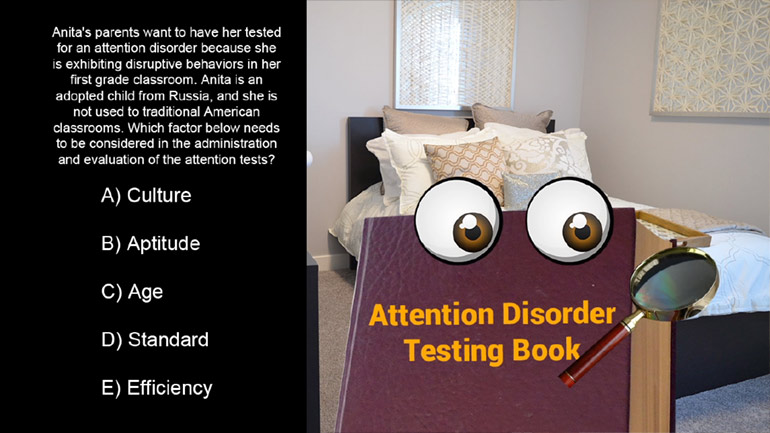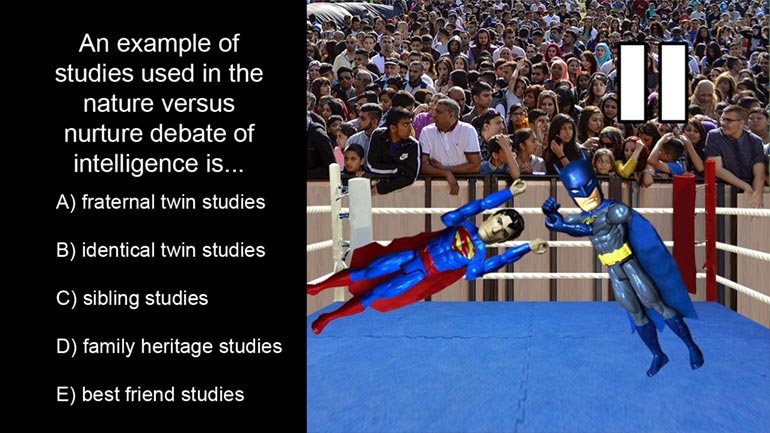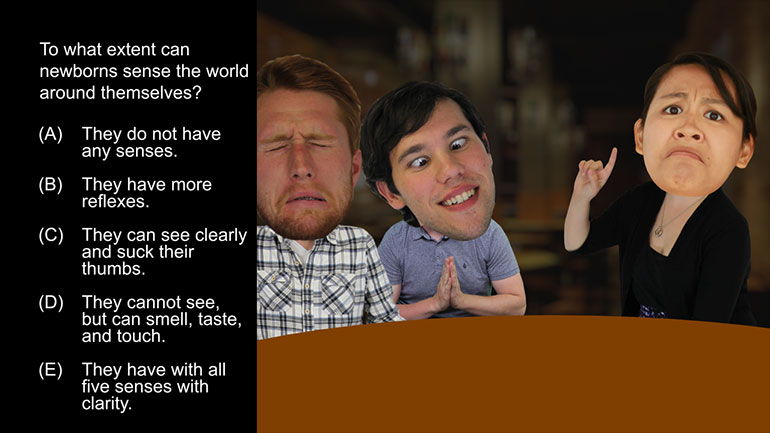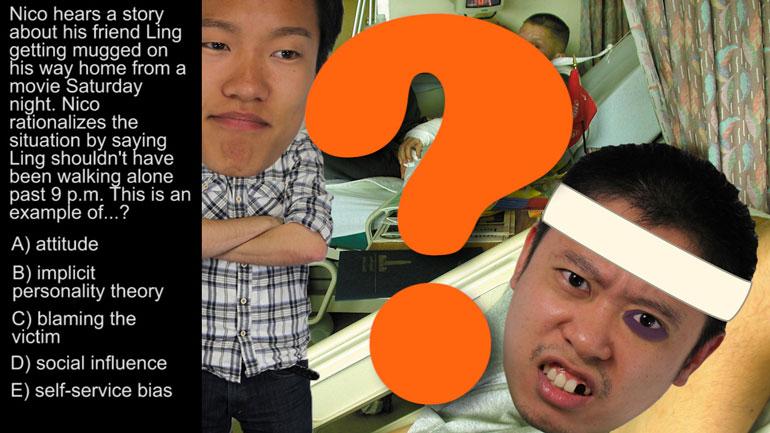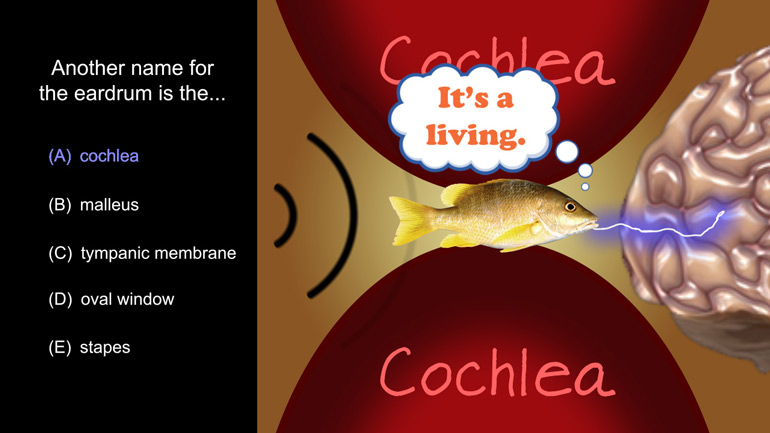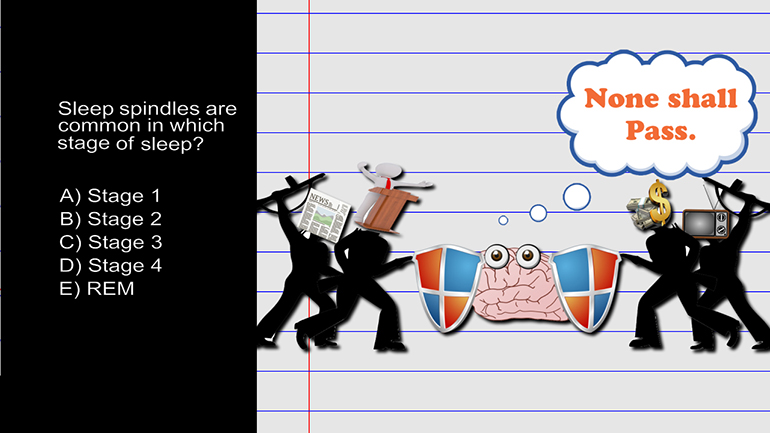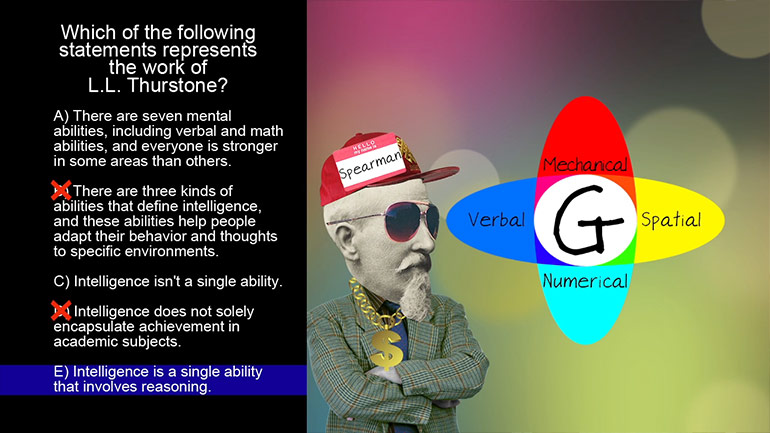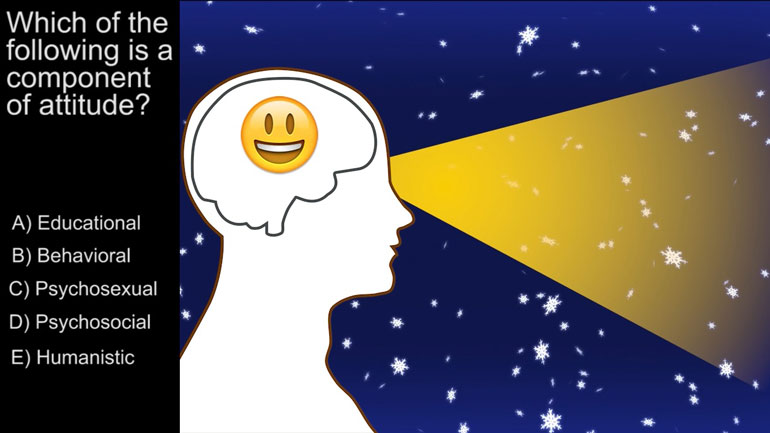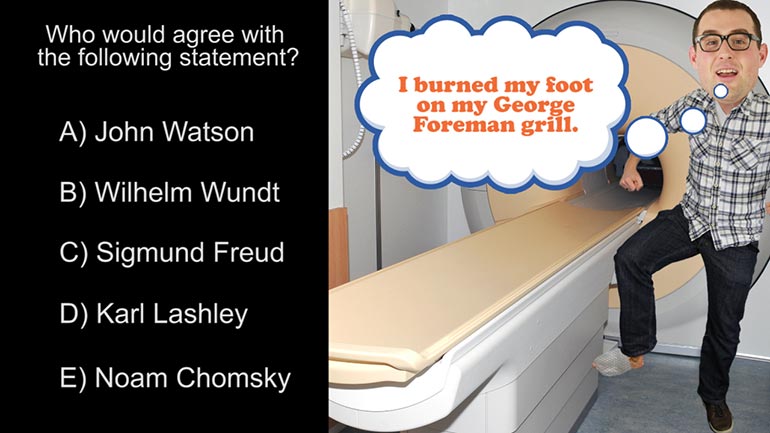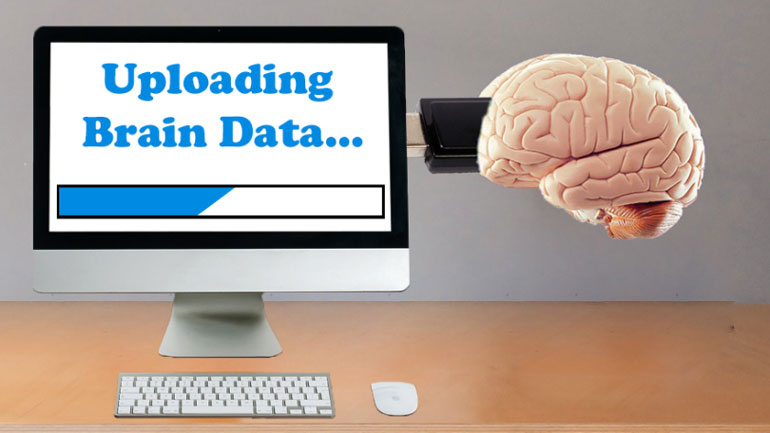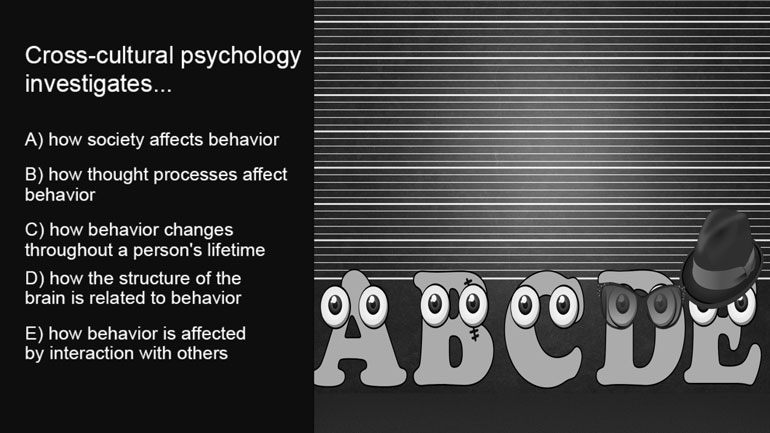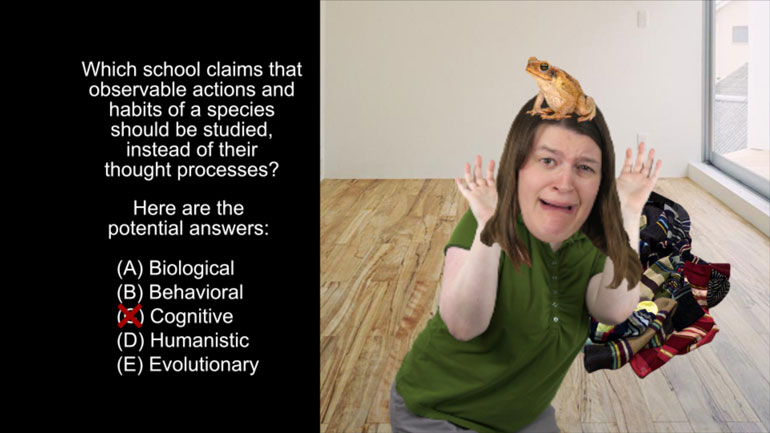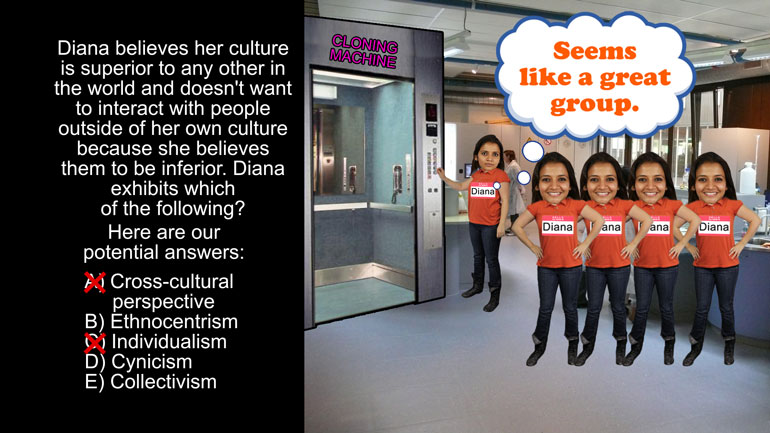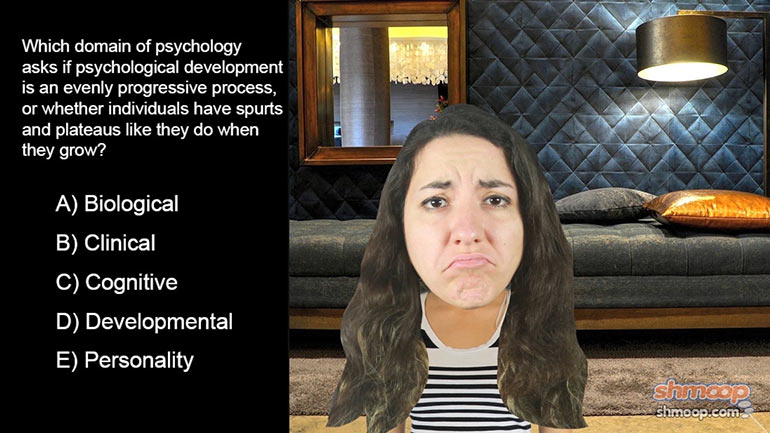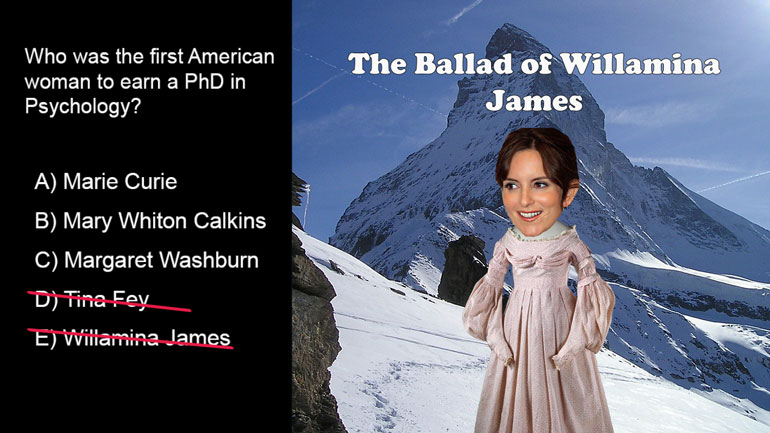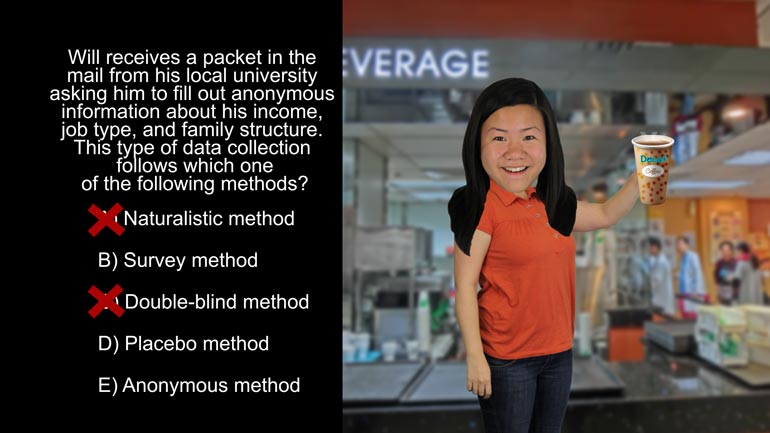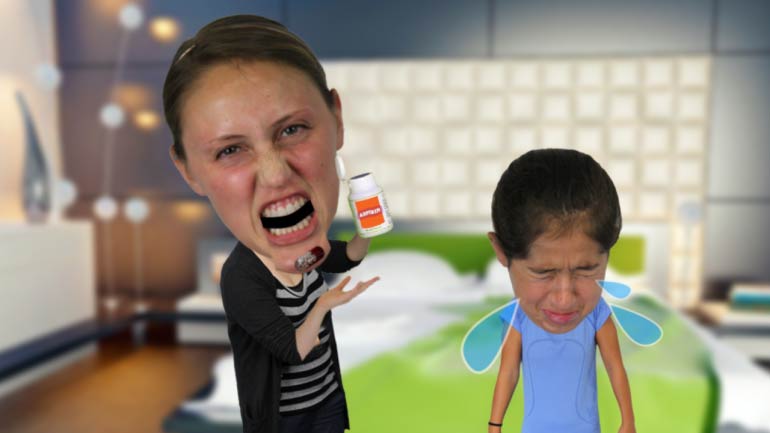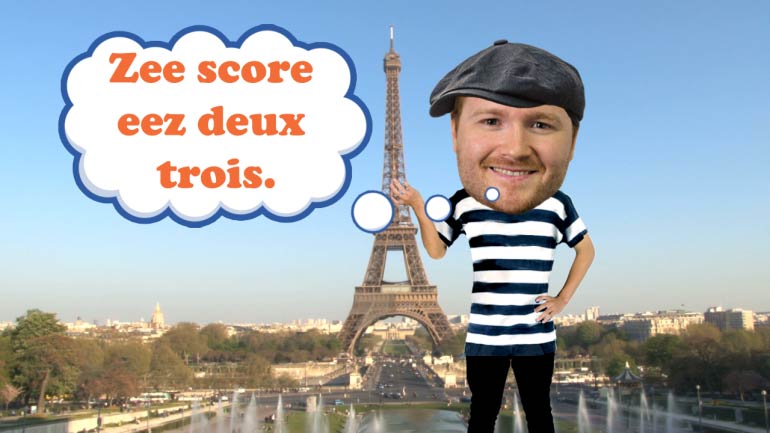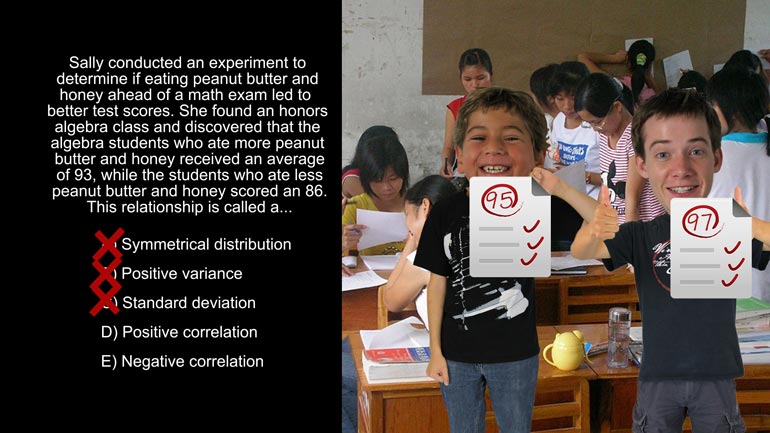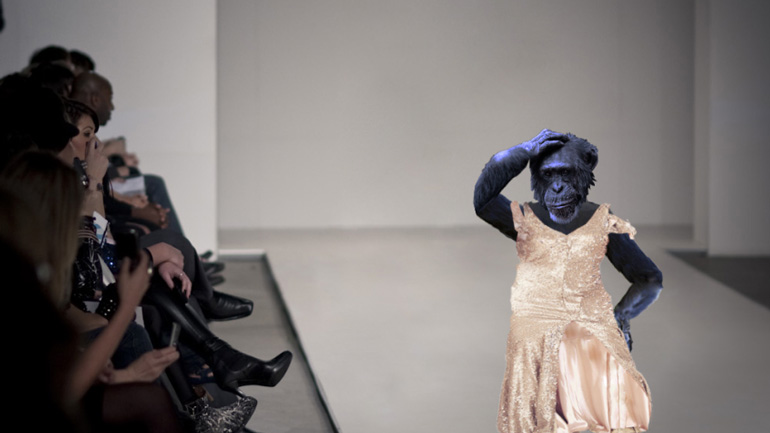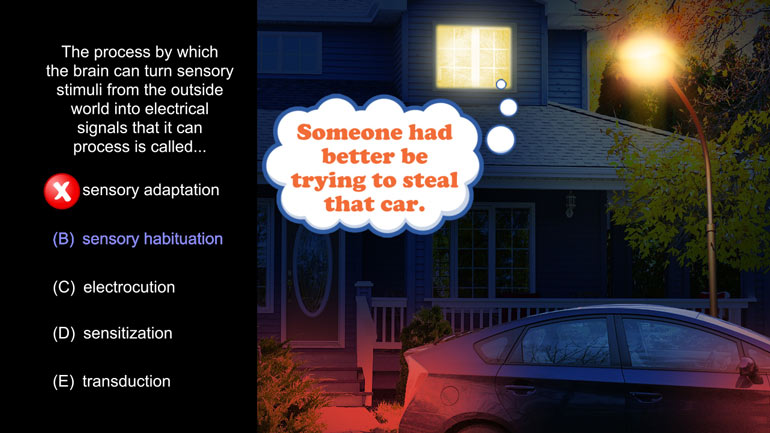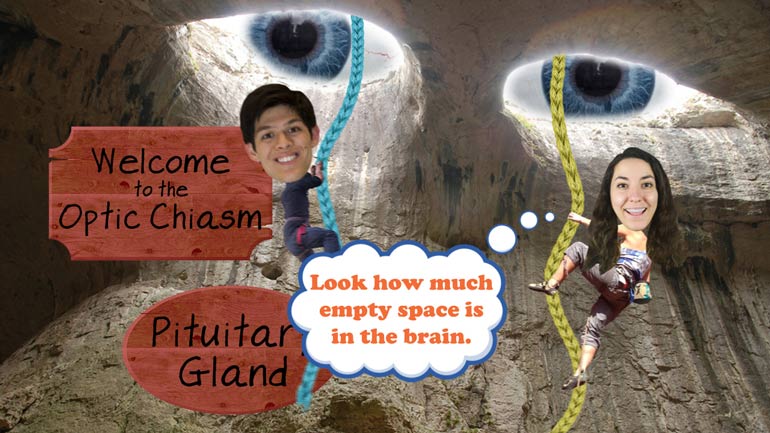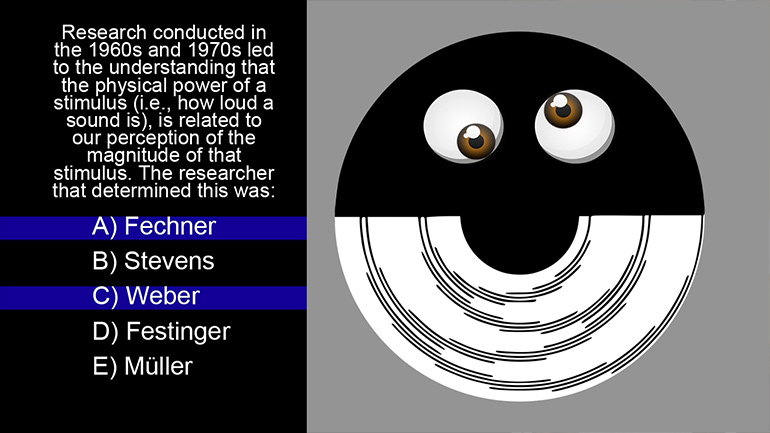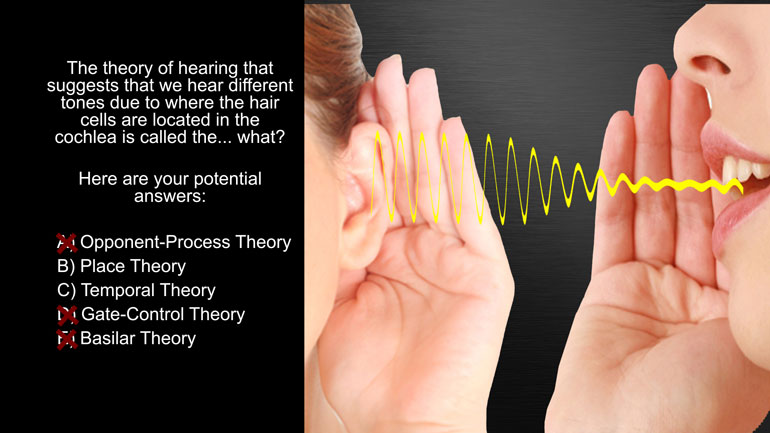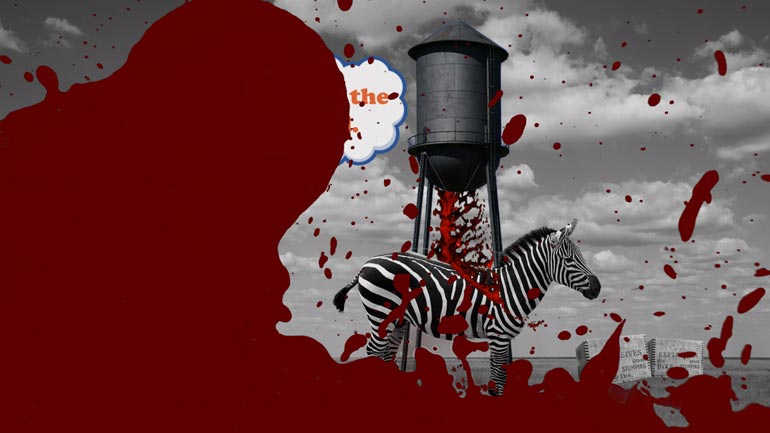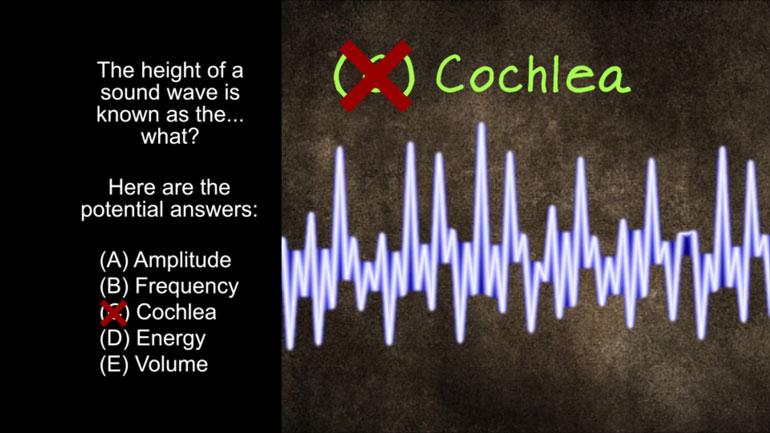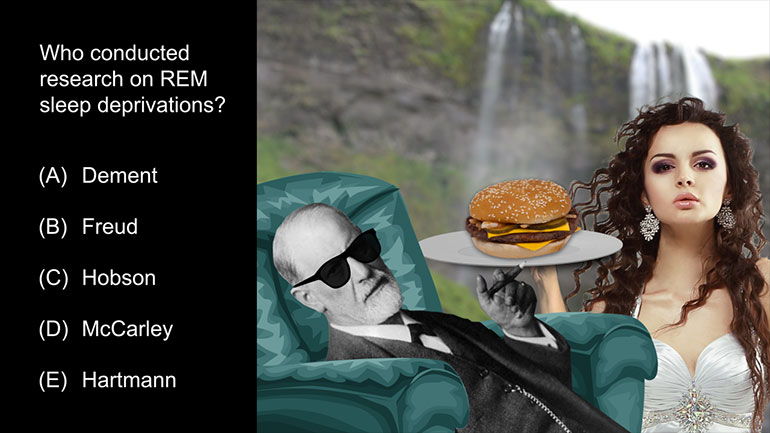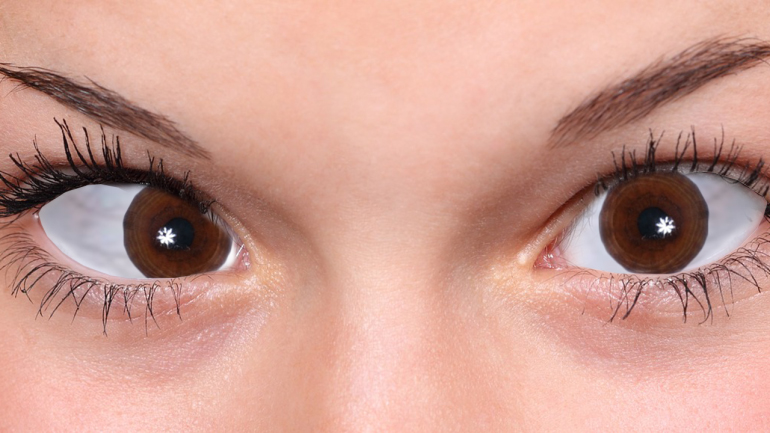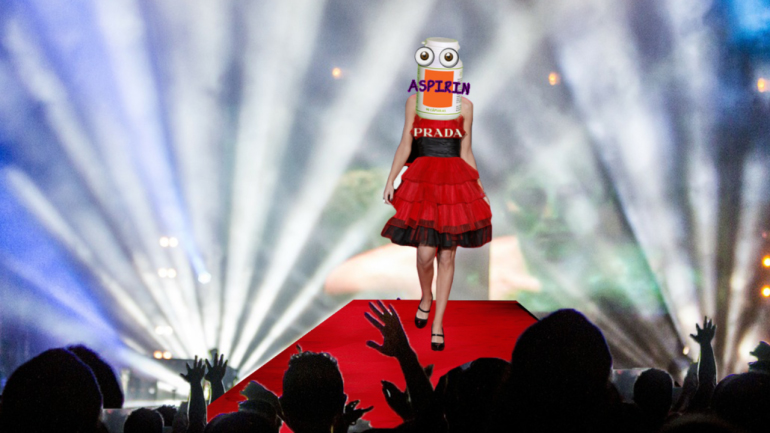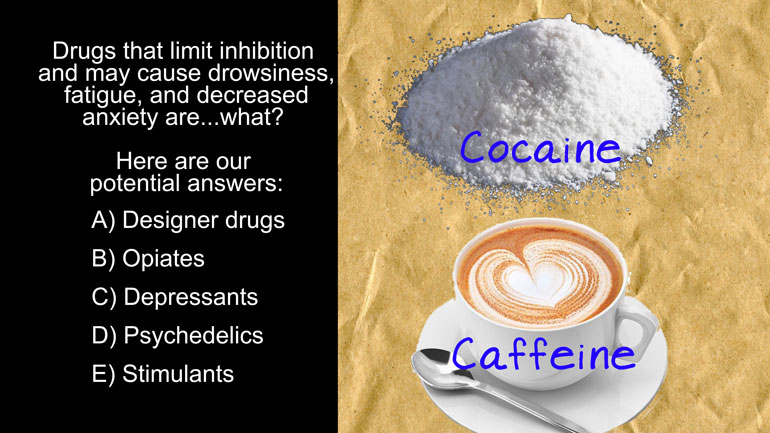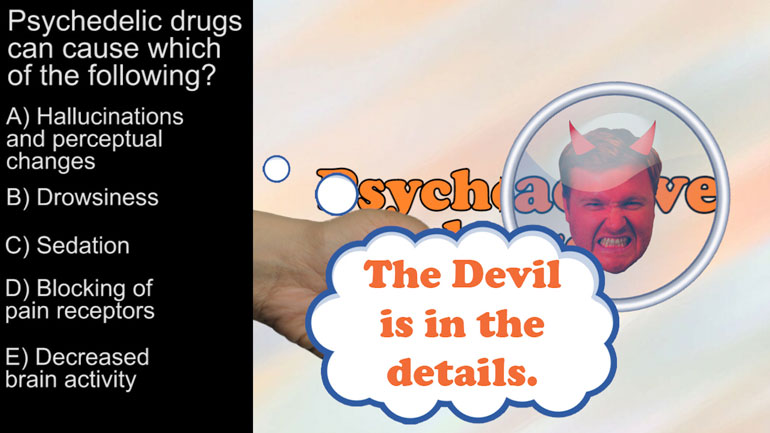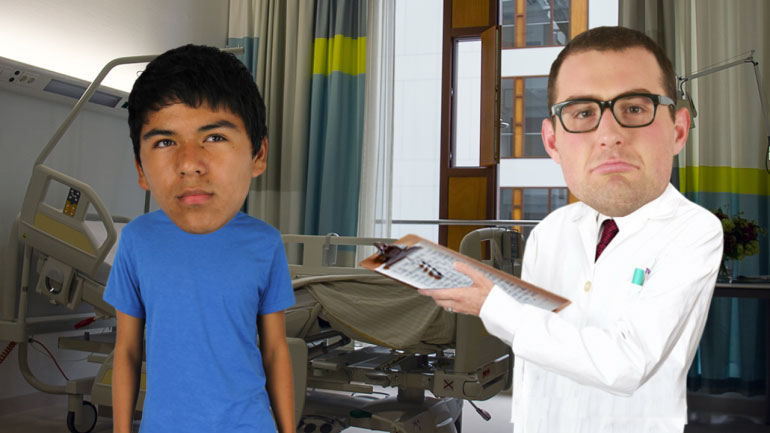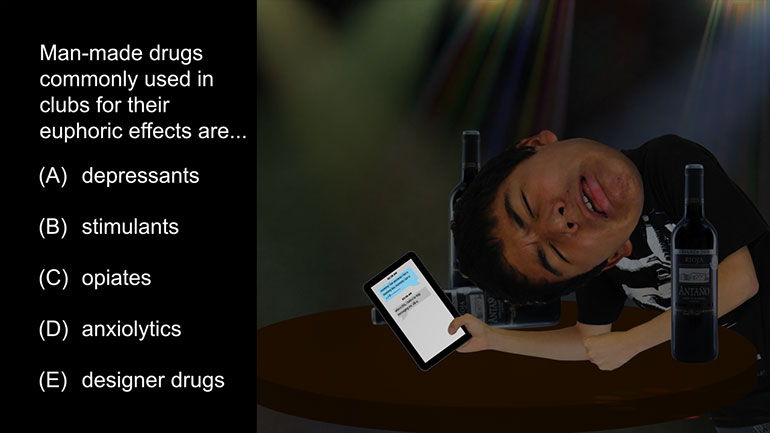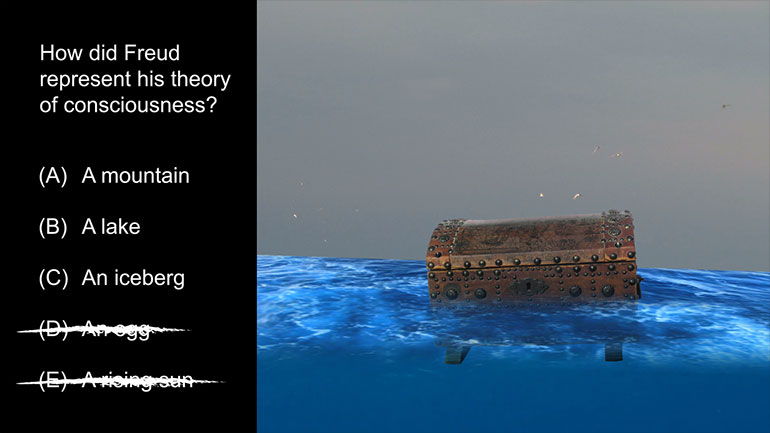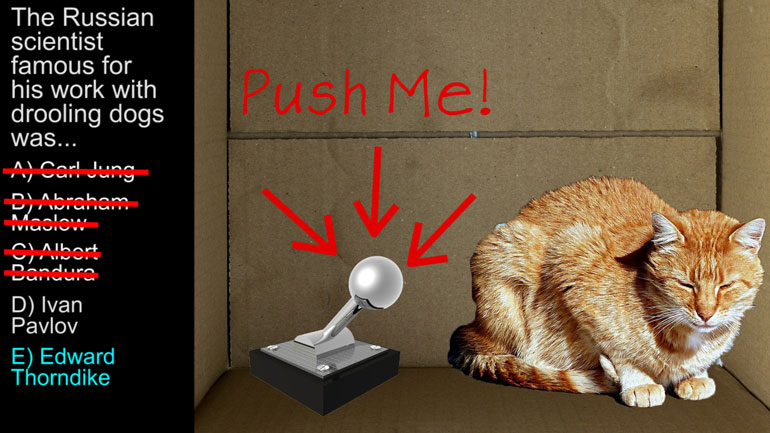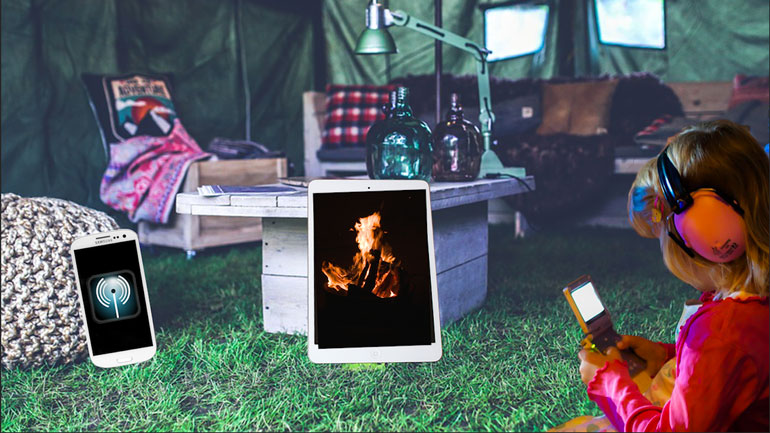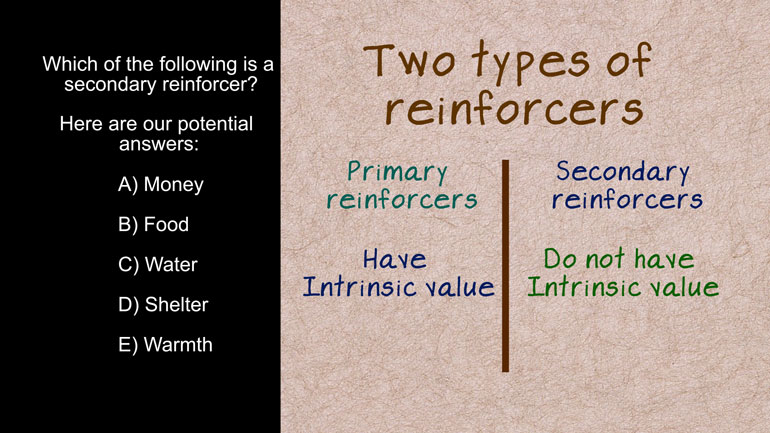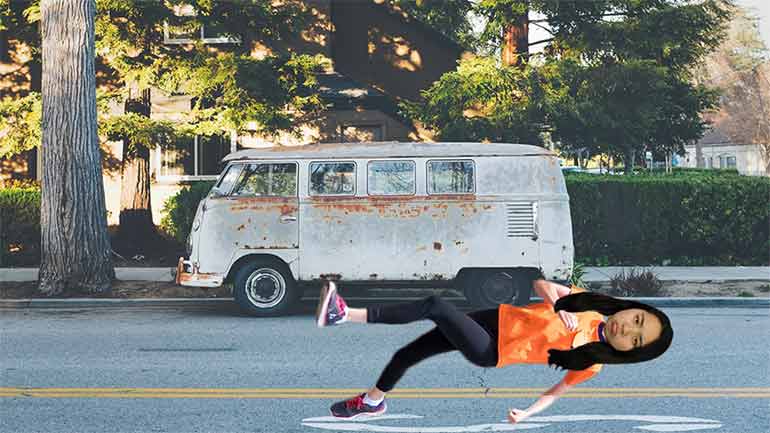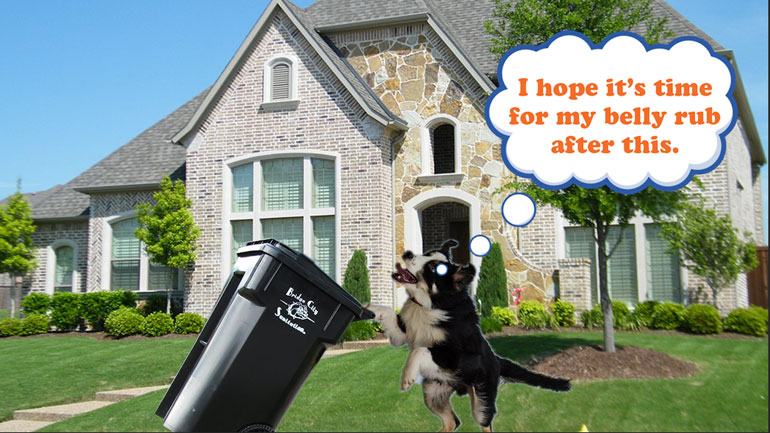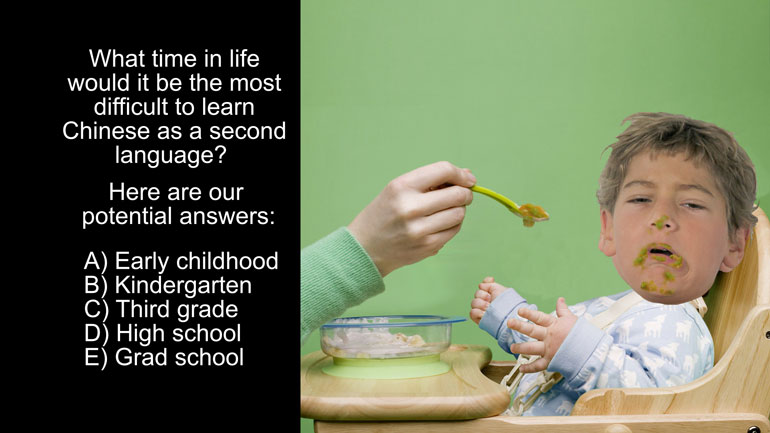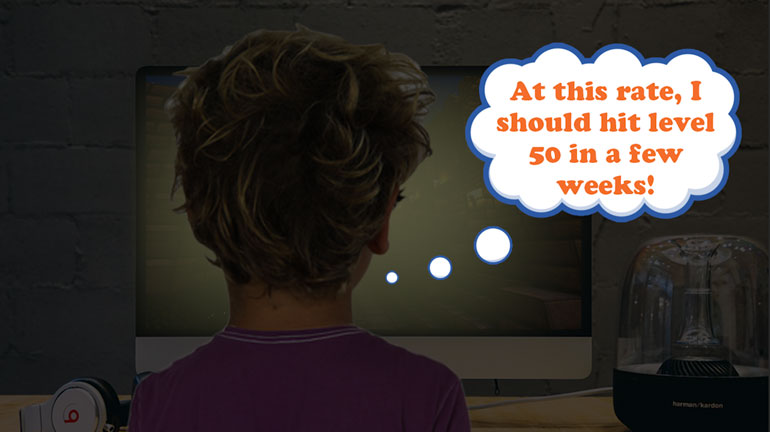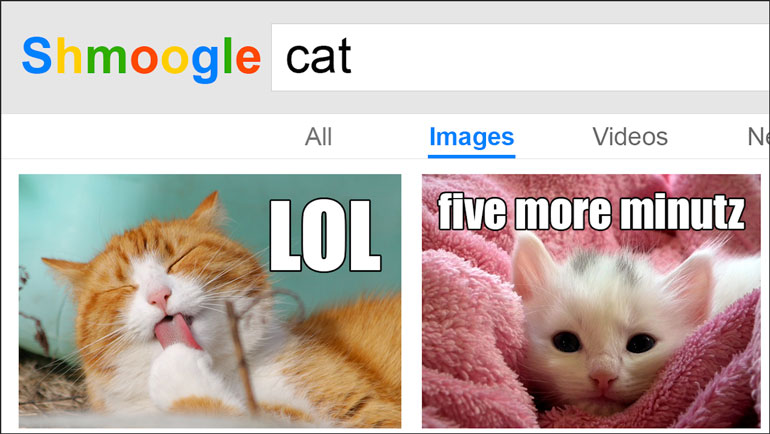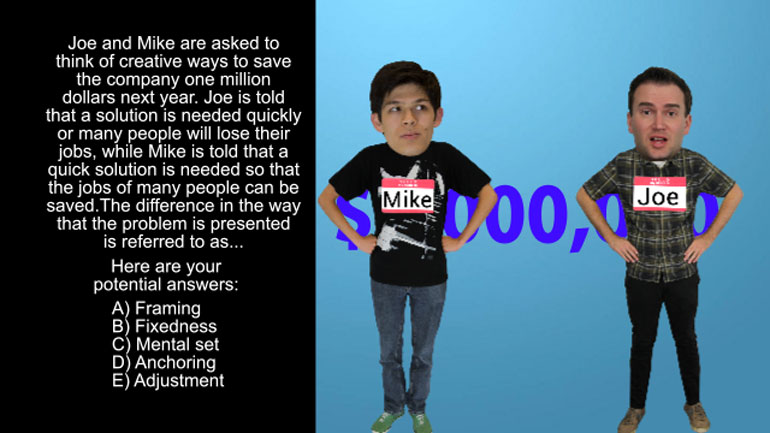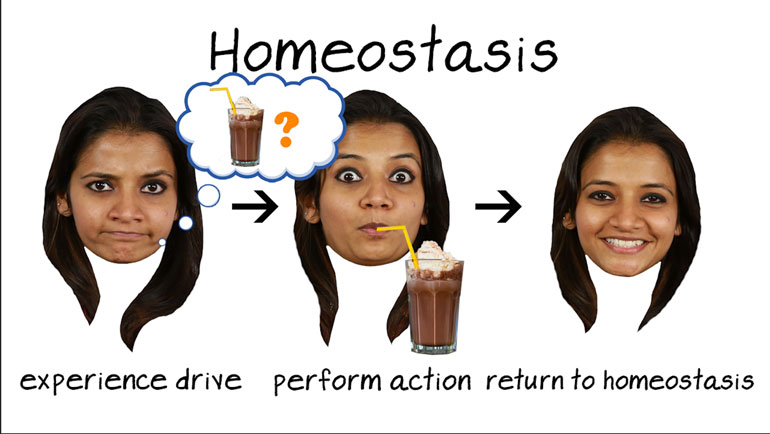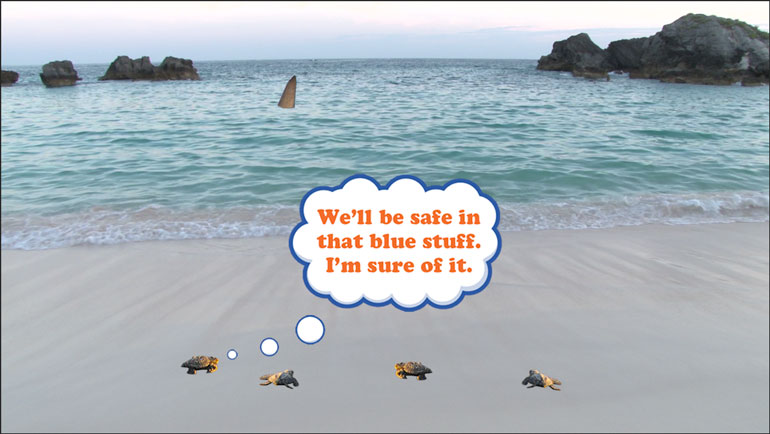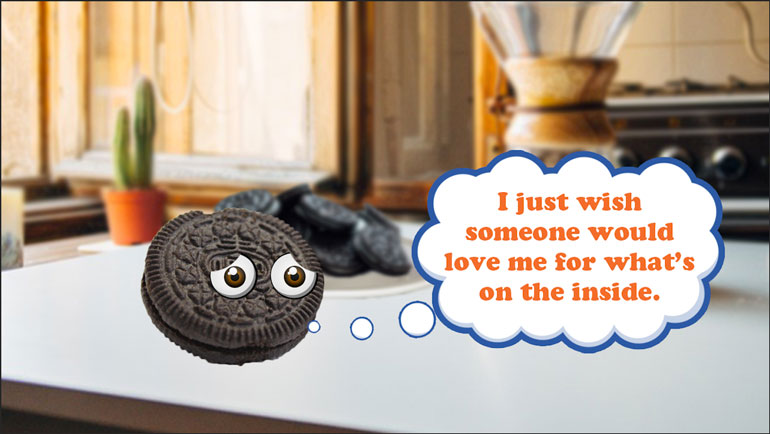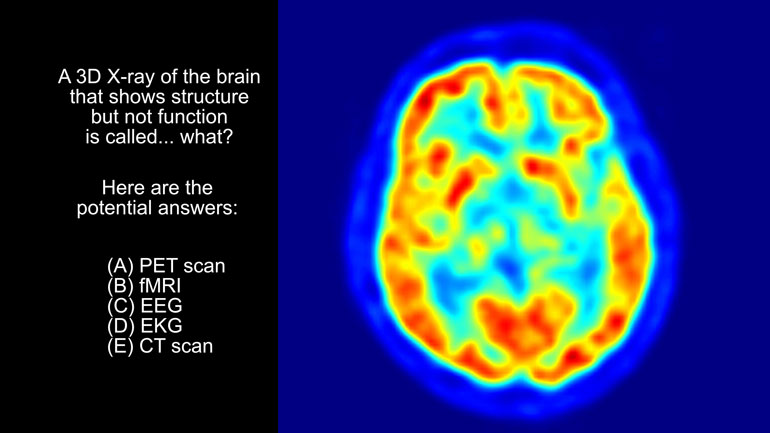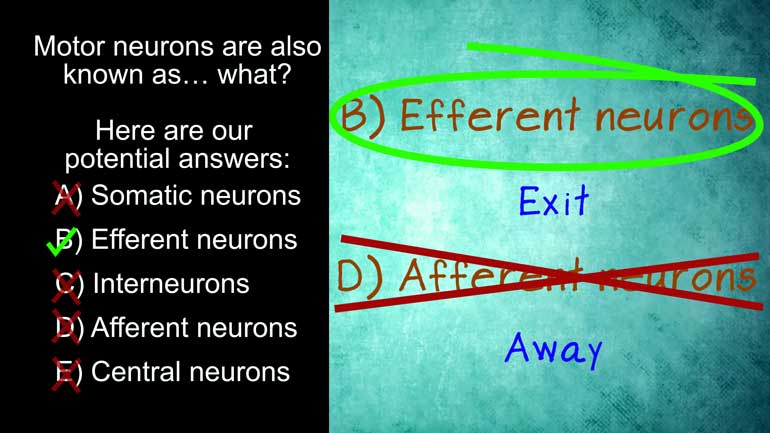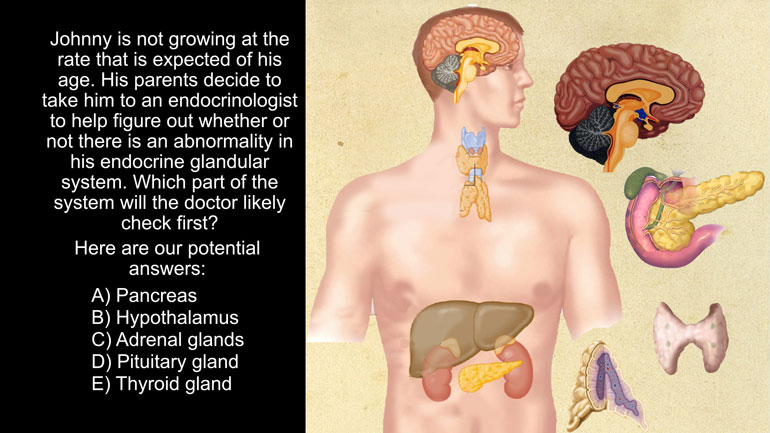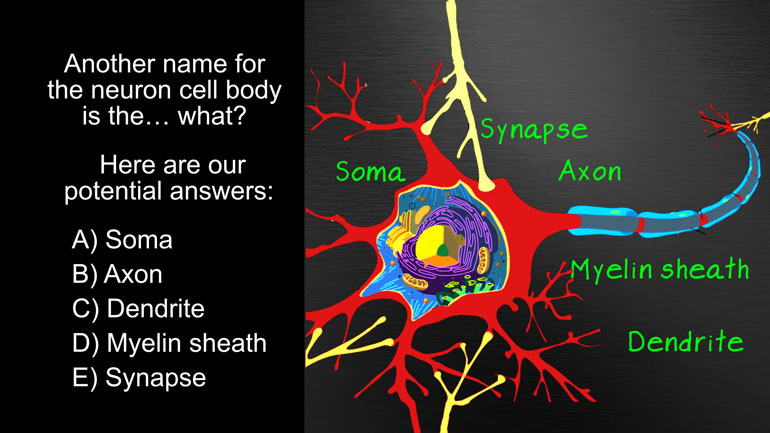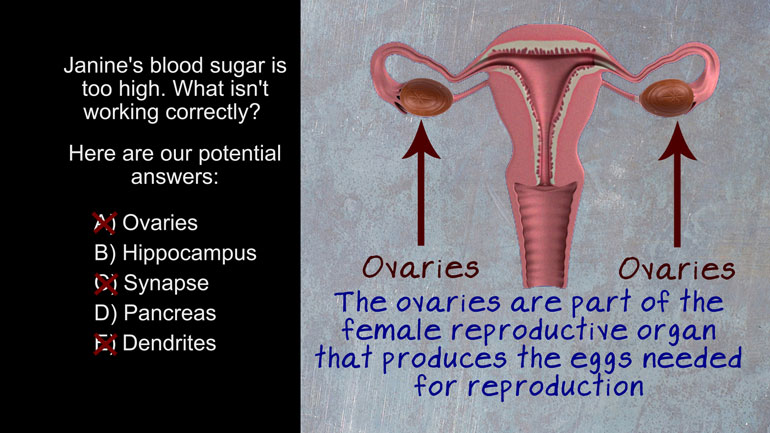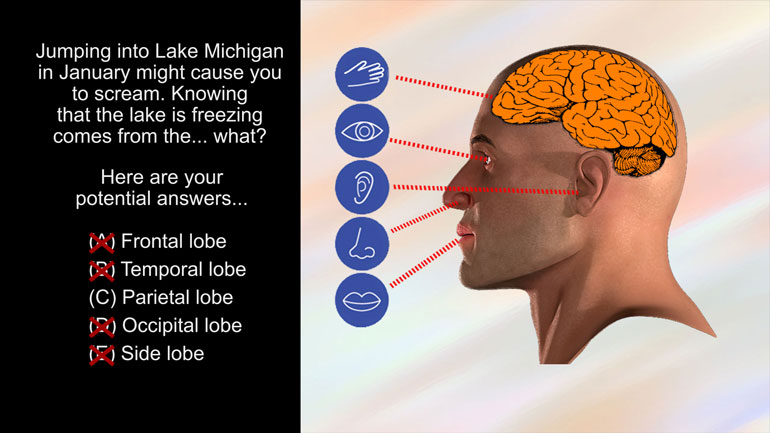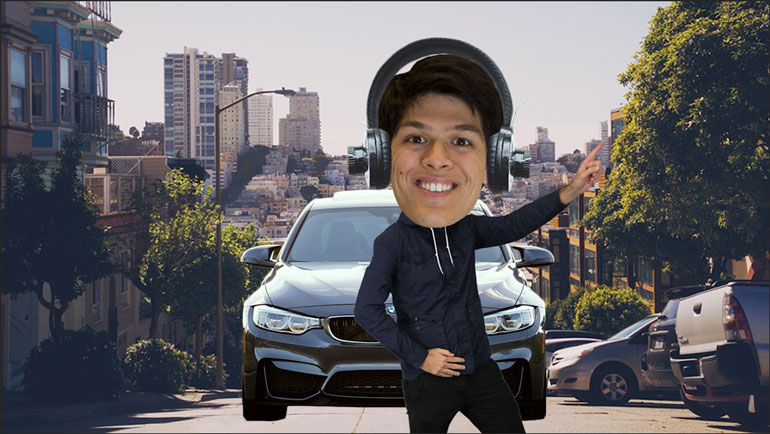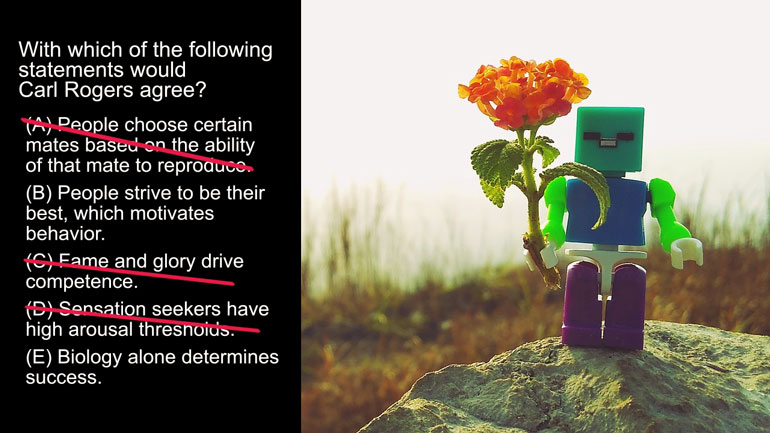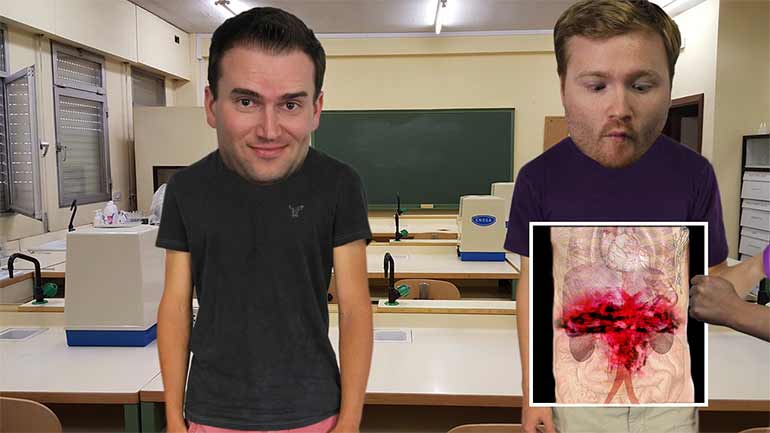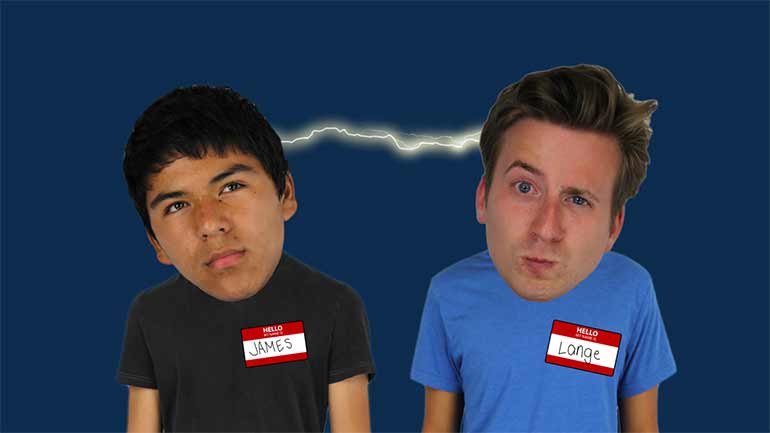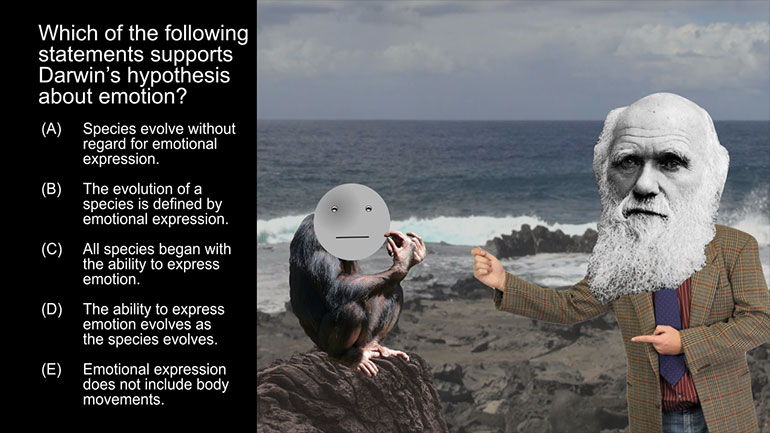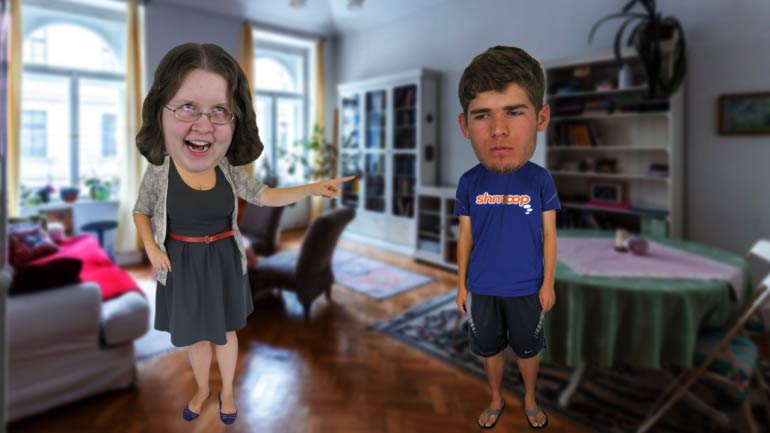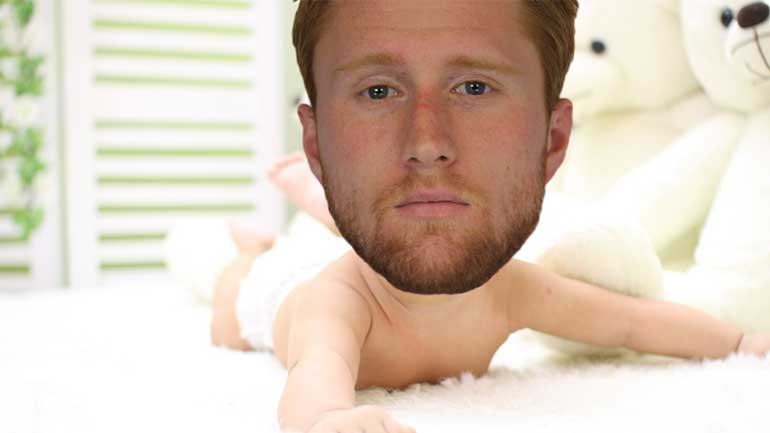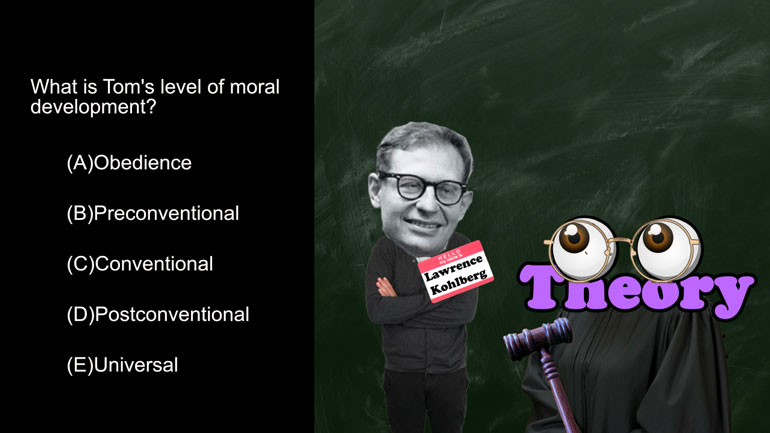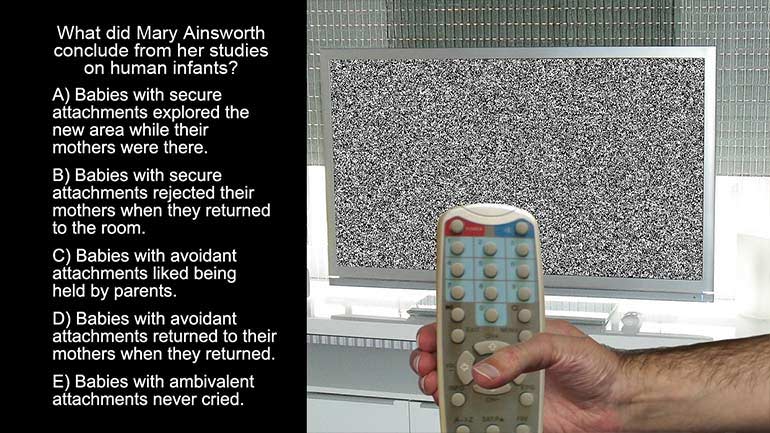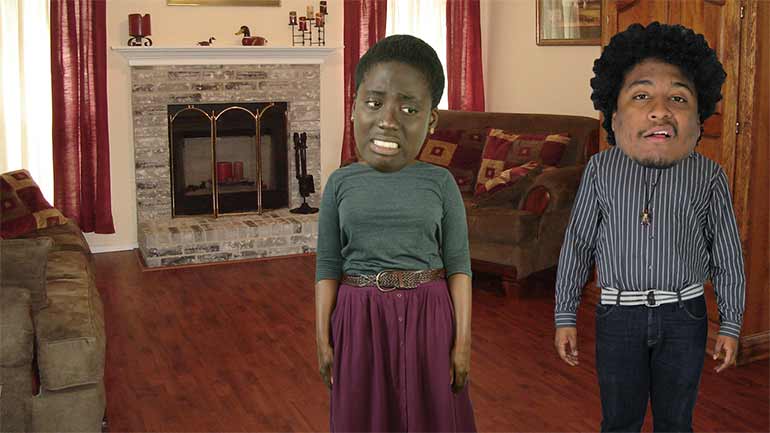ShmoopTube
Where Monty Python meets your 10th grade teacher.
Search Thousands of Shmoop Videos
AP Psychology Videos 135 videos
AP Psychology 2.3 Testing and Individual Differences. Which factor below needs to be considered in the administration and evaluation of the attenti...
AP Psychology 2.4 Testing and Individual Differences. Which of these is an example of studies used in the nature vs. nurture debate of intelligence?
AP Psychology 1.2 Developmental Psychology. How would you respond to someone stating that babies are born without any real sense of the world aroun...
AP Psychology 2.3 Developmental Psychology 14 Views
Share It!
Description:
AP Psychology 2.3 Developmental Psychology. What did Mary Ainsworth conclude from her studies on human infants?
Transcript
- 00:04
And here's your shmoop du jour brought to you by secure attachments the
- 00:08
alternate brand of superglue it's just not the very catchy name guys all right [Baby with a bottle of milk attached to glue]
- 00:13
here's today's question.. What did Mary Ainsworth conclude from her studies on
- 00:17
human infants and here are potential answers...
- 00:22
well so apparently babies form attachment to their mothers super weird [Mother holding baby]
Full Transcript
- 00:26
it's almost like they were physically connected to them for nine months or
- 00:30
something Wow okay so Mary Ainsworth knew what was up but she was more
- 00:35
interested in what types of attachments babies formed like maybe your baby uses [woman with arms taped and horses look on]
- 00:41
velcro while others preferred duct tape it's hard to say so our friend Mary
- 00:45
divides an assessment technique called the strange situation classification
- 00:50
through the strange situation procedure in order to investigate the varying [person using magnifying glass on a computer monitor]
- 00:54
forms of attachment among young children she conducted the procedure by observing
- 00:59
the behavior of infants in a series of eight episodes lasting three minutes [infants faces on a computer screen]
- 01:03
each Ainsworth would make note of behaviors exhibited by the infant
- 01:07
including contact seeking, contact maintaining, avoidance of contact and
- 01:13
resistance to contact all leading her to identify three main attachment styles
- 01:18
insecure avoidant, secure and insecure ambivalent wow that Mary sure is [3 main types of attachment]
- 01:25
organized we wonder if we can get her to help out with our closet anyway did she
- 01:29
conclude that C) babies with avoidant attachment liked being held by parents [A messy closet]
- 01:35
well Ainsworth used the term insecure avoidant to describe children who are
- 01:40
independent both emotionally and physically from their attachment figure
- 01:44
and who explore their environment without concern for where their guardian [Baby wearing a coat and hat walking]
- 01:48
is there the babies who grow up to be Indiana Jones you know they do their own
- 01:52
thing which means they don't necessarily love being held by their parents and [Mother holding a baby]
- 01:56
they don't feel the need to go running back to mom all the time so that
- 02:00
eliminates C) and D) did Ainsworth conclude that E) babies with ambivalent
- 02:04
attachments never cried... insecure ambivalent is an attachment style where [baby crying on the floor]
- 02:10
the children seem clingy and dependant but simultaneously reject their [baby throws block at mothers head]
- 02:15
attachment figure when they try to interact with them they don't develop
- 02:18
security and struggle to be comforted effectively this is mostly due to
- 02:23
inconsistencies on behalf of the caregiver all that insecurity sounds
- 02:28
pretty sad right almost like it might make you cry and so that puts a damper [Man crying]
- 02:32
on E) so Ainsworth conclusion must have been about babies with secure
- 02:37
attachments secure attachment babies feel confident that their attachment
- 02:41
figure is available to meet their needs their figure is a safe base from which [Mother pushing boulder away from baby]
- 02:45
to explore and also a safe place to seek reassurance at times of stress so would
- 02:50
they be reject their mothers now that would make any sense which means that
- 02:54
Ainsworth concluded that A) babies with secure attachments explored freely while
- 02:59
their mother was present which is pretty logical right if you know the nest will
- 03:03
be there when you need it you might go ahead and check out what else is up in [Bird flying]
- 03:07
the tree so A) is the correct answer fortunately Ainsworth found secure
- 03:10
attachment to be the most common style weird we were really betting on that [Woman carrying baby taped to her back]
- 03:15
duct tape thing...
Related Videos
AP Psychology 2.2 Social Psychology. Which of the following was an independent variable manipulated in Asch's research?
AP Psychology 1.1 Personality. According to Freud, these three parts of personality are constantly in conflict.
AP Psychology 1.1 Sensation and Perception. The process by which the brain can turn sensory stimuli from the outside world into electrical signals...
AP Psychology 1.1 Social Psychology. Which of the following best describes social psychology?
AP Psychology 1.1 States of Consciousness. Who conducted research on REM sleep deprivations?
